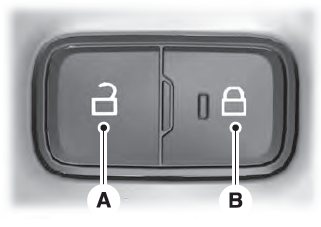Lincoln Aviator: Climate Control / Hints on Controlling the Interior Climate
General Hints
Note: Prolonged use of recirculated air may cause the windows to fog up.
Note: You may feel a small amount of air from the footwell air vents regardless of the air distribution setting.
Note: To reduce humidity build-up inside your vehicle, do not drive with the system switched off or with recirculated air always switched on.
Note: Do not place objects under the front seats as this may interfere with the airflow to the rear seats.
Note: Remove any snow, ice or leaves from the air intake area at the base of the windshield.
Note: To improve the time to reach a comfortable temperature in hot weather, drive with the windows open until you feel cold air through the air vents.
Automatic Climate Control
Note: Adjusting the settings when your vehicle interior is extremely hot or cold is not necessary. Automatic mode is best recommended to maintain set temperature.
Note: The system adjusts to heat or cool the interior to the temperature you select as quickly as possible.
Note: For the system to function efficiently, the instrument panel and side air vents should be fully open.
Note: If you select AUTO during cold outside temperatures, the system directs air flow to the windshield and side window air vents. In addition, the blower motor may run at a slower speed until the engine warms up.
Note: If you select AUTO during hot temperatures and the inside of the vehicle is hot, the system uses recirculated air to maximize interior cooling. Blower motor speed may also reduce until the air cools.
Quickly Heating the Interior
- Press and release AUTO.
- Adjust the temperature function to the setting you prefer.
Recommended Settings for Heating
- Press and release AUTO.
- Adjust the temperature function to the setting you prefer. Use 72°F (22°C) as a starting point, then adjust the setting as necessary.
Quickly Cooling the Interior
- Press and release MAX A/C.
Recommended Settings for Cooling
- Press and release AUTO.
- Adjust the temperature function to the setting you prefer. Use 72°F (22°C) as a starting point, then adjust the setting as necessary.
Defogging the Side Windows in Cold Weather
- Press and release defrost or maximum defrost.
- Adjust the temperature control to the setting you prefer. Use 72°F (22°C) as a starting point, then adjust the setting as necessary.
 Automatic Climate Control
Automatic Climate Control
Note: Depending on your vehicle option
package, the controls may look different
from what you see here.
Note: You can switch temperature units
between Fahrenheit and Celsius...
 Rear Passenger Climate Controls
Rear Passenger Climate Controls
Use the rear passenger touchscreen to
select the following:
Touch the climate button on the
feature bar to access the rear
passenger climate control screen...
Other information:
Lincoln Aviator 2020-2026 Service Manual: Removal and Installation - Front Door Lock Control Switch
Special Tool(s) / General Equipment Interior Trim Remover Removal NOTE: LH (left-hand) side shown, RH (right-hand) side similar. Remove the driver door window control switch and bezel as an assembly. Release the clips...
Lincoln Aviator 2020-2026 Service Manual: Diagnosis and Testing - Roof Opening Panel
DTC Chart: Roof Opening Panel Diagnostics in this manual assume a certain skill level and knowledge of Ford-specific diagnostic practices. REFER to: Diagnostic Methods (100-00 General Information, Description and Operation). BCM Module DTC Chart DTC Description Action B12F4:12 Vehicle Speed Output: Circuit Short To Battery GO to Pinpoint Test A B12F4:14 Vehicle Speed Output: Circuit Short To Ground or Open GO to Pinpoint Test A - All other BCM Diagnostic Trouble Codes (DTCs) REFER to: Body Control Module (BCM) (419-10 Multifunction Electronic Modules, Diagnosis and Testing)...
Categories
- Manuals Home
- Lincoln Aviator Owners Manual
- Lincoln Aviator Service Manual
- Remove and Reinstall the Battery
- Interior Lamps
- Changing the Front Wiper Blades - Vehicles With: Heated Wiper Blades
- New on site
- Most important about car
Locking and Unlocking the Doors from Inside

Locking the Doors
Press the lock switch on the door interior trim panel. The doors can no longer be released using the exterior door handle switches and the luggage compartment locks.
